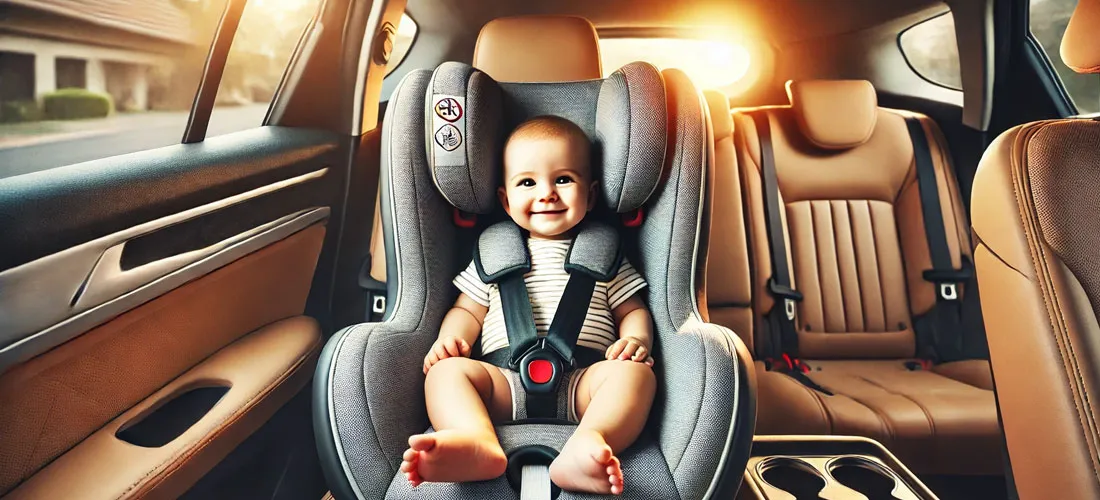When it comes to traveling with your baby, safety and comfort are the top priorities. Choosing the right car seat and accessories ensures your little one is protected while making car rides more convenient for parents. This guide provides expert insights into selecting the best car seats, must-have accessories, and essential safety tips to help you make the best choice for your child.

Finding the right car seat depends on your child’s age, weight, and developmental stage. Below are the key types of car seats and their benefits:
Specifically designed for newborns and babies up to 35 lbs.
Rear-facing for maximum protection in case of impact.
Features include removable padded inserts, ergonomic carrying handles, and an easy-to-install base.
Ideal for parents looking for portability and compatibility with strollers.
Check: Choosing the Best Infant Car Seat for Your Baby
Transforms from a rear-facing seat to a forward-facing seat.
Higher weight limits allow extended rear-facing use, enhancing safety.
Provides longevity as it grows with your child.
Some models include additional recline options and extended legroom.
Designed for children who have outgrown their forward-facing seats.
Positions the seatbelt correctly across your child’s body.
Available in high-back and backless styles.
Essential for keeping older kids safe until they reach the required height for using a standard seatbelt.
Enhance your child’s travel experience with these highly recommended car seat accessories:
Shields vehicle seats from spills, crumbs, and indentations caused by car seats.
Non-slip material prevents the car seat from shifting.
Ideal for leather and fabric upholstery.
Allows parents to keep an eye on their rear-facing baby without turning around.
Adjustable, shatterproof design for added safety.
Helps monitor your baby’s comfort and well-being during trips.
Perfect for protecting car seats from dirt and damage during air travel.
Padded and waterproof for extra durability.
Convenient backpack-style straps for hands-free carrying.
Provides additional comfort and prevents head flopping in newborns.
Made with soft, breathable materials for gentle support.
Recommended for long road trips and newborns with less neck control.
Blocks harmful UV rays and reduces glare inside the car.
Maintains a cooler car environment for your baby.
Static cling or suction cup designs for easy installation.
Selecting the best car seat involves more than just age and weight recommendations. Consider these essential factors:
Safety Certifications: Ensure the seat meets federal safety standards (e.g., NHTSA, JPMA approval).
Size Compatibility: Verify the car seat fits properly in your vehicle.
Installation Method: Look for user-friendly options with LATCH connectors for a secure fit.
Ease of Cleaning: Choose models with removable, machine-washable covers for hassle-free maintenance.
Longevity: Opt for seats that accommodate growth, such as convertible or all-in-one models.
Ensuring correct installation and proper usage is crucial for protecting your child. Follow these guidelines:
Rear-Facing as Long as Possible: The AAP recommends keeping children rear-facing until at least age 2, or until they exceed the seat’s height and weight limit.
Proper Harness Fit: Straps should be snug, with the chest clip positioned at armpit level.
Avoid Bulky Clothing: Thick coats and snowsuits can interfere with the harness’s effectiveness.
Check for Recalls: Register your car seat to receive safety updates and recall notifications.
Replace After an Accident: Even if there’s no visible damage, a crash can compromise the car seat’s integrity.
The safest car seats for newborns are rear-facing infant car seats that meet NHTSA and JPMA safety standards. Look for models with a five-point harness, energy-absorbing foam, and side-impact protection.
Switch to a convertible car seat when your baby outgrows the height or weight limit of the infant seat, usually around 12-15 months. Keep them rear-facing as long as possible for maximum safety.
Experts recommend keeping children rear-facing until at least age 2, but ideally until they reach the maximum height and weight limit of their car seat (typically around 40 lbs for convertible models).
Booster seats ensure that the car’s seatbelt is positioned correctly across a child’s shoulder and lap, preventing injuries in a crash. High-back boosters provide additional head and neck support.
Follow the manufacturer’s installation guide, use the LATCH system if available, and ensure the seat does not move more than an inch when pulled at the base. If unsure, get it checked at a certified car seat inspection station.
Avoid using a second-hand car seat unless you know its history and it has never been in an accident. Check for expiration dates and recalls before use.
Some accessories, like car seat protectors and baby mirrors, add convenience, but only use manufacturer-approved accessories to avoid interfering with car seat safety features.
Check the manufacturer’s instructions for specific cleaning guidelines. Most car seats have machine-washable covers, but avoid harsh chemicals that could weaken the seat’s materials.
A high-quality car seat and the right accessories can make every car ride safer and more comfortable for your baby. By investing in the best options and following expert safety recommendations, you can ensure a smooth journey for your little one. Explore our top picks and find the perfect car seat and accessories for your family today!